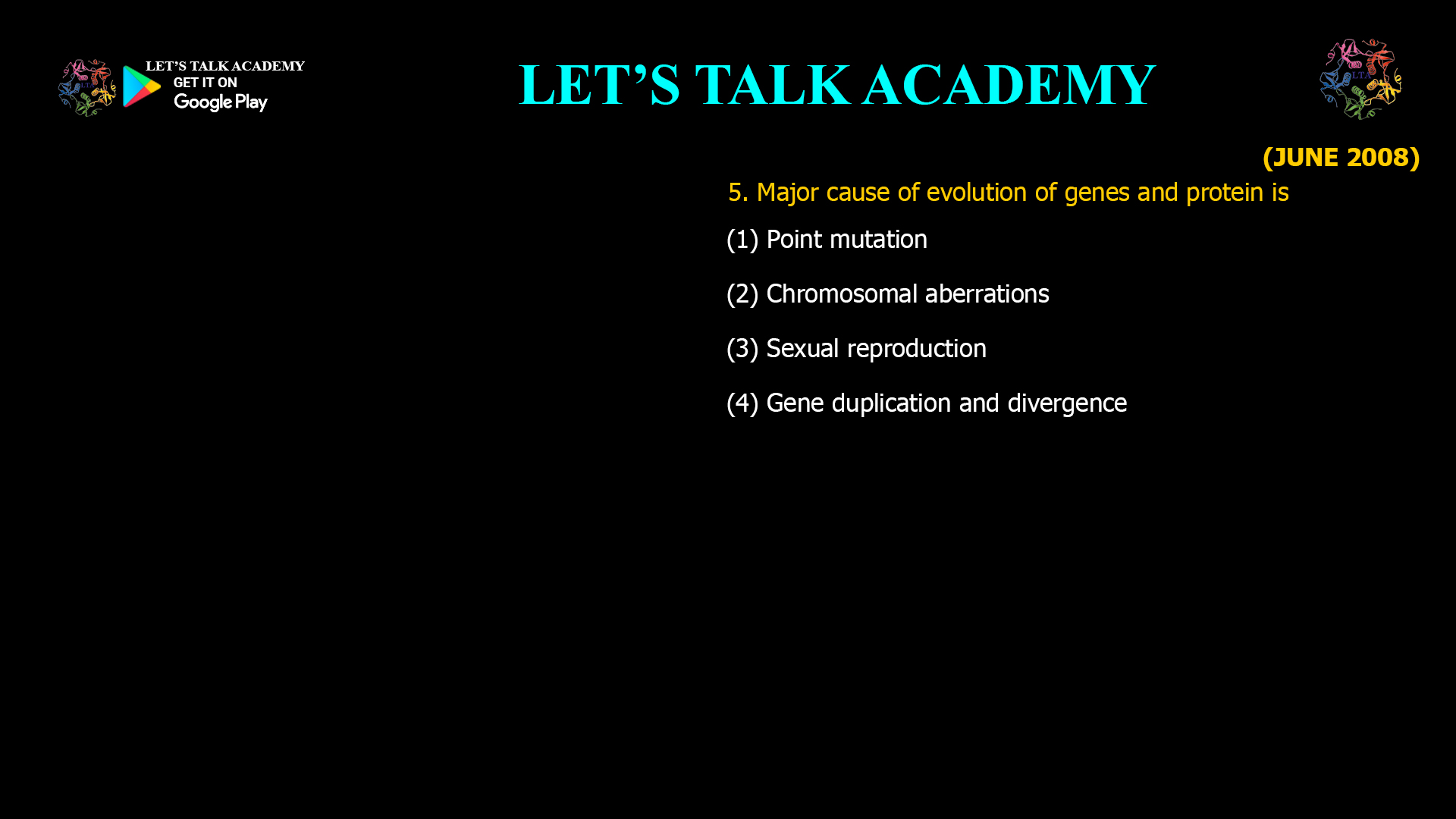- Major cause of evolution of genes and protein is
(1) Point mutation
(2) Chromosomal aberrations
(3) Sexual reproduction
(4) Gene duplication and divergenceGene Duplication and Divergence: The Major Force Behind the Evolution of Genes and Proteins
The diversity and complexity of life on Earth owe much to the remarkable evolution of genes and proteins. While mutations and chromosomal changes play roles in genetic variation, the major cause of gene and protein evolution is gene duplication and divergence. This process has shaped the molecular toolkit of all organisms, fueling innovation and adaptation throughout evolutionary history.
What Is Gene Duplication and Divergence?
Gene duplication occurs when an organism’s DNA is copied, resulting in two or more identical genes within the genome. Over time, these duplicate genes can accumulate mutations independently—a process known as divergence. This combination provides raw material for evolutionary experimentation:
-
One gene copy retains its original function, ensuring the organism’s survival.
-
The other copy is free to accumulate mutations, which may lead to new or specialized functions.
Why Is Gene Duplication So Important?
Gene duplication and subsequent divergence are responsible for:
-
Expanding protein families: Most protein families in modern genomes have arisen from ancestral genes through repeated duplication and divergence47.
-
Creating new functions: Diverged gene copies can evolve new biochemical activities, regulatory controls, or expression patterns, driving evolutionary innovation47.
-
Increasing biological complexity: The emergence of new gene functions underpins the development of novel traits, pathways, and higher-order biological systems47.
Evidence from Genomic Studies
-
Studies show that a vast majority of proteins—up to 97% in some animal genomes—are products of gene duplication events4.
-
Well-known examples include the hemoglobin gene family, which evolved through multiple rounds of duplication and divergence, resulting in proteins with different oxygen-binding properties4.
-
Genome sequencing and structural biology confirm that most increases in protein repertoire are due to duplication and divergence, not just point mutations or chromosomal aberrations7.
How Does Divergence Work?
Once a gene is duplicated:
-
Mutations (including point mutations, insertions, and deletions) accumulate in the extra copy.
-
These changes can alter the protein’s structure, function, or regulation.
-
If the new function provides a selective advantage, it may be retained and further refined by natural selection.
Other Mechanisms: Their Roles and Limitations
-
Point mutations: While essential for introducing small changes, they rarely create entirely new genes or protein families on their own.
-
Chromosomal aberrations: These can cause large-scale genetic changes, but are less frequent and often deleterious.
-
Sexual reproduction: Increases genetic diversity, but does not create new genes or protein families directly.
Conclusion: The Power of Duplication and Divergence
The major cause of evolution of genes and proteins is gene duplication and divergence. This process enables the emergence of new protein functions, drives the expansion of gene families, and underlies the complexity seen in living organisms today. Understanding this mechanism is central to evolutionary biology, genomics, and biotechnology.
Correct answer:
(4) Gene duplication and divergence -




1 Comment
Aakansha sharma Sharma
September 20, 2025(4) Gene duplication and divergence is correct answer